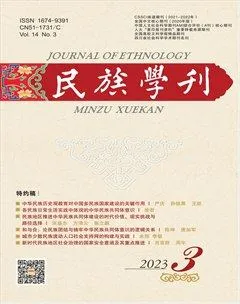“Multi-level Collaborative Governance” in Ethnic Areas:Structural Features and Internal Logic
Zhou Jinqu, Liu Jinlin, Yang Yu
DOI:10.3969/j.issn.1674-9391.2023.3.005
Abstract:
Hierarchical governance and collaborative governance can be considered as two ways to try to solve complex problems. Under the framework of hierarchical governance, a higher level of government controls most of the power and resources and can set targets or assign tasks to lower-level governments through administrative orders. Under the framework of collaborative governance, higher and lower levels of government, different departments within the same government, governmental and non-governmental organizations attempt to reach consensuses through equal consultations, and government entities do not have the right to issue orders unilaterally. Starting from the standpoint of binary opposition, some scholars believe that hierarchical governance is rigid and conservative as well as obstructing and rejecting collaborative governance. Therefore, they fiercely criticize hierarchical governance and propose “a retreat of the state”, and believing that “only collaboration is the hope of our era”; however, some scholars argue that a transplant of Western “planarized” collaborative governance theory in a simplistic way by ignoring Chinas unique institutional characteristics is unable to effectively solve Chinese problems.
This paper takes L county of Guangxi Zhuang Autonomous Region as a case study to investigate its implementation process of poverty alleviation microcredits. It is found that L County breaks down into components the task of granting poverty alleviation microcredits, then distributes them to each township government and village administration through a vertical hierarchical system; in other words, it implements hierarchical governance. Results also show that horizontal mechanisms of loan discount, risk compensation, and interest linkage have been established by the L County Government, township governments, villages administrations, putting rural credit institutions, leading enterprises, and contact officials in charge of poverty elimination, registering poor households and other stakeholders into the scope of governance subjects, and carrying out collaborative governance at the levels of county, township, and village administration respectively. Vertical hierarchical governance crosses the three horizontal levels of collaborative governance, forming a “multi-level collaborative governance” model. These findings allow us to draw two important implications: First, Chinese vertical hierarchical governance is full of elasticity. In order to accomplish urgent tasks at a certain stage, it can bring other stakeholders into the scope of governance subjects, and carry out collaborative governance through equal communication. Second, China is a centralized unitary state, administrative subordination relationships exist between the upper and lower levels of government in China. Chinas institutional characteristics determines that collaborative governance in the Chinese context is embedded in a hierarchical governance system and will present a “multi-level” feature inevitably.
“Multi-level collaborative governance” not only conforms to the structural logic of the Chinese unitary state but also conforms to the logic of the instrumental rationality of grassroots government. Through multi-level collaborative governance, higher-level governments can inspire enthusiasm for lower levels of government to implement the issued policies efficiently. Through multi-level collaborative governance, the government can bring stakeholders—such as corporations and non-governmental organizations—into the scope of the governance subject, integrate resources across different departments, and make up for the plight of a single entity being “incapable”. In short, “multi-level collaborative governance” has been able to integrate the advantages of hierarchical governance and collaborative governance, and to realize the effect of “upper and lower linkage, left and right coordination”, and as a consequence is an ideal model for the governance of Chinese complex problems.
Key Words:
poverty alleviation microcredit; collaborative governance; hierarchical governance
- 民族學刊的其它文章
- 中華民族歷史觀教育對中國多民族國家建設的關鍵作用
- On the Building and Practice of a Social Support Network for the Urban Ethnic Minority Floating Population: A Case Study of “Ethnic Homes” in Guangzhou
- The Early Practice and Cultural Construction of Visual Ethnodanceology
- Core Issues in the Philological Study of Ethnic Literary Integration History in Ancient Southwest China
- A Study on the Formation Mechanism and Evolution Trend of Red Revolutionary Tourism Symbiosis Atlas in Sichuan Province
- A Development Model for the Homestay Industry in Qiang Areas Against the Background of Rural Revitalization:Based on a Survey in Wenchuan County, Aba Prefecture

